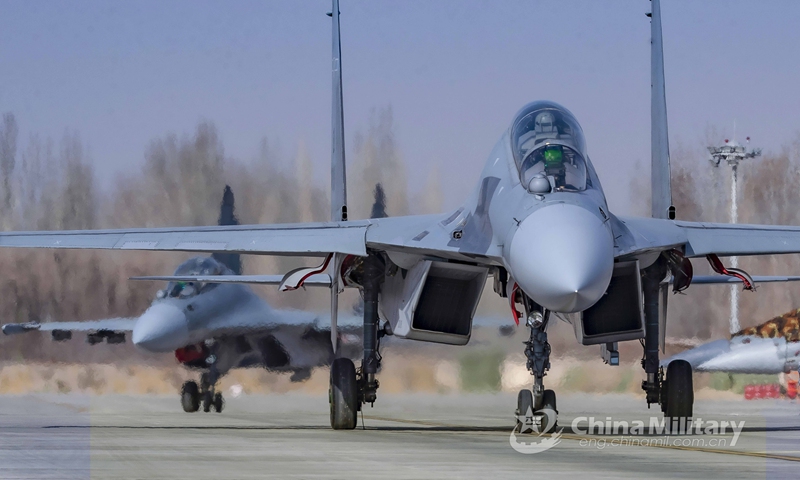The US military on Tuesday accused China of conducting an “unprofessional” intercept of a US spy plane over the South China Sea, however it is the US that should reflect on its own provocative military operations near China in the first place, Chinese experts said on Wednesday.
Coming before the IISS Shangri-La Dialogue, the US is hyping this accusation to again push the “China threat” theory after a meeting between Chinese and US defense chiefs at the event was reportedly turned down by China, analysts said.
A Chinese J-16 fighter jet performed an “unnecessarily aggressive” maneuver during the intercept of a US Air Force RC-135 aircraft on Friday when the latter was “conducting safe and routine operations over the South China Sea in international airspace,” the US Indo Pacific Command said in a statement on Tuesday.
The Chinese warplane “flew directly in front of the nose of the RC-135, forcing the US aircraft to fly through its wake turbulence,” read the US statement, with a video attached showing the abovementioned incident.
However, the US side failed to mention the exact location where the incident took place, intentionally using a vague description of “international airspace,” Zhang Xuefeng, a Chinese military expert, told the Global Times on Wednesday.
Chinese pilots take maneuvers to expel foreign aircraft only after failed radio warnings, and when it happens, foreign aircraft usually are very close to Chinese islands and reefs or the mainland, Zhang said. “No country’s military will sit by and watch this kind of close-in reconnaissance.”
The US frequently carries out close-in reconnaissance of China, sometimes taking provocative activities including low-altitude fly-bys and buoy-dropping, which are the real “unnecessarily aggressive” maneuvers, Zhang said.
Judging from the video, the Chinese fighter jet did an outstanding job professionally in sending a warning to the US spy plane without risking a collision, a Beijing-based military expert who requested anonymity told the Global Times on Wednesday.
The US is like a thief crying “stop thief.” If someone keeps wandering around on your doorsteps and taking photos all the time with obvious malicious intentions, it is not your fault if you make them go away, the expert said.
Extended US close-in reconnaissance operations on China seriously violate China’s sovereignty security and are a source of maritime safety issues, and the US should stop such dangerous provocations immediately, Mao Ning, a spokesperson at China’s Ministry of Foreign Affairs, said at a routine press conference on Wednesday, responding to the intercept incident.
China will continue to take necessary measures to resolutely safeguard sovereignty security, Mao said.
The incident took place shortly before the IISS Shangri-La Dialogue, a major defense forum in the Asia-Pacific region to be held from Friday to Sunday in Singapore.
China has turned down a request to arrange a meeting between Chinese and US defense chiefs at the event, the US Defense Department said on Monday.
In response, Chinese Defense Ministry spokesperson Tan Kefei said in a statement on Wednesday that while China values China-US military ties and bilateral military interactions are not suspended, dialogue can’t take place without principles and communication can’t happen without a bottom line.
The US is responsible for the current challenges, as it is creating obstacles and sabotaging mutual trust. It should show sincerity with actions to create conditions for communication, Tan said.
The hyping of the intercept incident is yet another example of the US creating obstacles rather than the necessary conditions for dialogues, as the information was obviously intentionally timed to release before the Shangri-La Dialogue, another Chinese military expert told the Global Times on Wednesday, requesting anonymity.
It has become a habit for US secretary of defense to make accusations against China and hype the “China threat” theory during the speech at the forum, the expert said, expecting more fierce confrontations between the Chinese and US delegations at the event.




